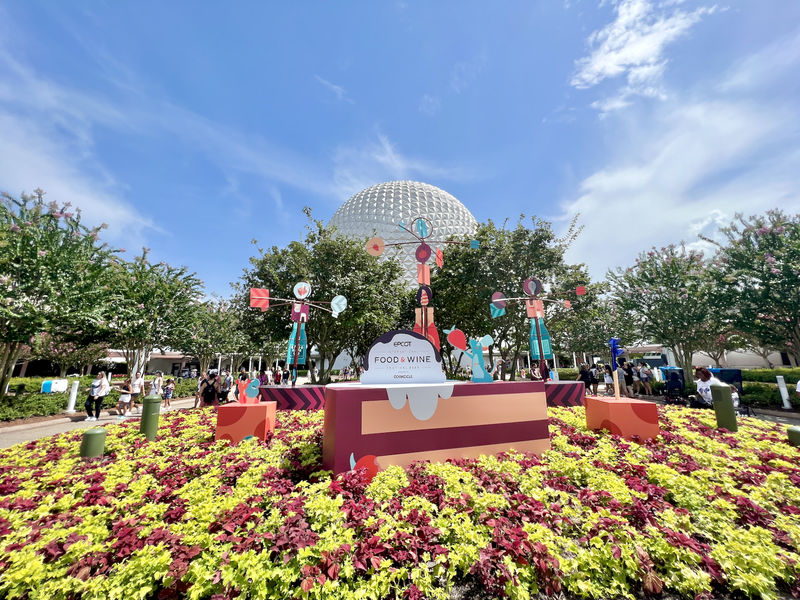Advertisement
Parents and families of children on the autism spectrum know that their children have their own unique and special set of needs and outlooks. This can make planning trips to a grocery store or the local shopping mall an ordeal at times. Families and parents might feel overwhelmed at the thought of a trip to the Walt Disney World Resort, but it can be done and can be done successfully.
As a teacher, I had a student with moderate autism. A bright, imaginative young boy, he was completely fascinated by Mickey Mouse. He knew all of the lines to the songs from Mickey Mouse Clubhouse, could tell you details about the creation and early years of Mickey Mouse that many adults traveling to Walt Disney World Resorts wouldn't know, and usually dressed in Mickey-themed clothes. His family planned a trip to Walt Disney World for his 4th birthday, and he had an amazing time, bringing photos back to share with the class. His enthusiasm for his trip was enchanting. Planning a trip with preschoolers with autism has its own unique sets of challenges; however, it is entirely possible.
When beginning to plan your trip to Walt Disney World with any child, and especially with a child who has special abilities and needs, it is essential to realistically look at your child's schedule, temperament, level, and abilities and plan your day accordingly. If your child is prone to overstimulation, marathoning it through three parks in one day will be stressful for everyone. Take a realistic look at what your child enjoys and doesn't, and what your child needs to have a good day at home and preschool.
Take this information when planning your days. Plan time to relax, and provide plenty of time for transitions. It is often extremely helpful for children with autism to anticipate change and understand a schedule. Discuss the upcoming trip with your child and allow them time to discuss concerns. Let them know if there will be a car or airplane trip, when they will go and what they might see. It might be helpful to develop a book or story outlining what might happen, for example, "When we go to Walt Disney World, we will get on an airplane and fly to Florida."
Have your trip planned early and let your preschooler know about your schedule ahead of time, and do your best to stick with it. It doesn't have to be regimented, but even outlines such as, "When we wake up tomorrow, we are going to the Magic Kingdom. First, we are going to have breakfast at a special place called the Crystal Palace."
Consider having a visual checklist for your child, so they can see their day, including waking up, which parks or rides you are visiting, where you will eat, and going back to the hotel.
Make sure to involve your child in the planning. Consider getting travel guides for the Walt Disney World parks and resorts, and looking at the pictures. Discuss the rides and attractions. Use the Walt Disney World website to look up pictures of your hotel, or of restaurants you have reservations for, and share these with your preschooler. Preparing your child in advance can make a huge difference in your trip. Walt Disney World offers a PDF titled "Guide for Guests with Cognitive Disabilities" that is an amazing resource for families of preschoolers with autism. In addition to outlining excellent tips, it includes a reference for how long rides and attractions are, and what elements they may include that could be unsettling or over-stimulating for children with autism.
Additionally, buying park tickets in advance will alleviate lines and help your plan be consistent, so consider buying tickets in advance, as well as making dining reservations before you arrive. Practice skills that might be necessary in the park, such as waiting in line, or going to a place with a lot of people. Role play with your child and help them develop the skills they will need. Have a plan for waiting in lines, whether it be an electronic device, a favorite action figure or two, or a coloring book.
Plan ahead and have a plan for a meltdown. Bring a calm-down toy, a sensory bag, or another item to help your child regroup. Consider getting your child a necklace, wristband or other item identifying them as being on the Autism Spectrum and any other pertinent medical information. Talk to your child about what to do if they get lost or separated from you. You may also want to consider bringing ear plugs or noise cancelling headphones, as parks can be loud. Practice wearing them a few times at home.
When you are at the parks and resorts, there are a lot of resources for parties traveling with children with autism. Plan to visit the Guest Relations Lobby in each park to help obtain resources for your day. The Guest Relations Lobby is located in the City Hall in the Magic Kingdom, near the main entrance of Disney's Animal Kingdom, near the main entrance of Disney's Hollywood Studios, and near Spaceship Earth at Epcot. At the Guest Relations Lobby, families can obtain identification to use strollers as wheelchairs for preschoolers who will need to remain in a stroller to use queues. Additionally, families can discuss the needs and discern with cast members whether a Disability Access Service Card, usually called a DAS card, is appropriate.
If applicable, a DAS card allows guests to "virtually" wait in line rather than physically. Guests show the card at the attraction, and receive a time (comparable to current wait times) to return to the attraction and enjoy it. They can walk around the park, eat a snack, or visit other park attractions while they wait, and return at the appointed time for the ride. It's a good resource for rides that have long wait times or queues that may be stressful or overstimulating for children with autism. You can only have one virtual waiting time at a time, and once you ride the attraction, you are then eligible to get another time at the same or at a different attraction.
Fastpasss another excellent resource for families and parents of preschoolers with autism. Plan on utilizing this resource to skip lines, as well, and alleviate time in crowds, tight places and time waiting.
While at a park, children with autism might become overwhelmed or overstimulated. If your child needs a place to take a break, any cast member will direct you to the nearest location to do so if asked. They are a great resource on your visit.
Another important consideration is to find ways to link your child's interests and passions within your trip. If your child loves Disney Princesses, plan to visit the Princess characters, have a character breakfast, or take time to linger over Princess items in stores. The more you engage your child on their level and interest during the trip, the more they will enjoy it.
With carefull planning, and utilization of resources within the parks, your child and family can have an amazing trip and make memories they will love to share.




Comments